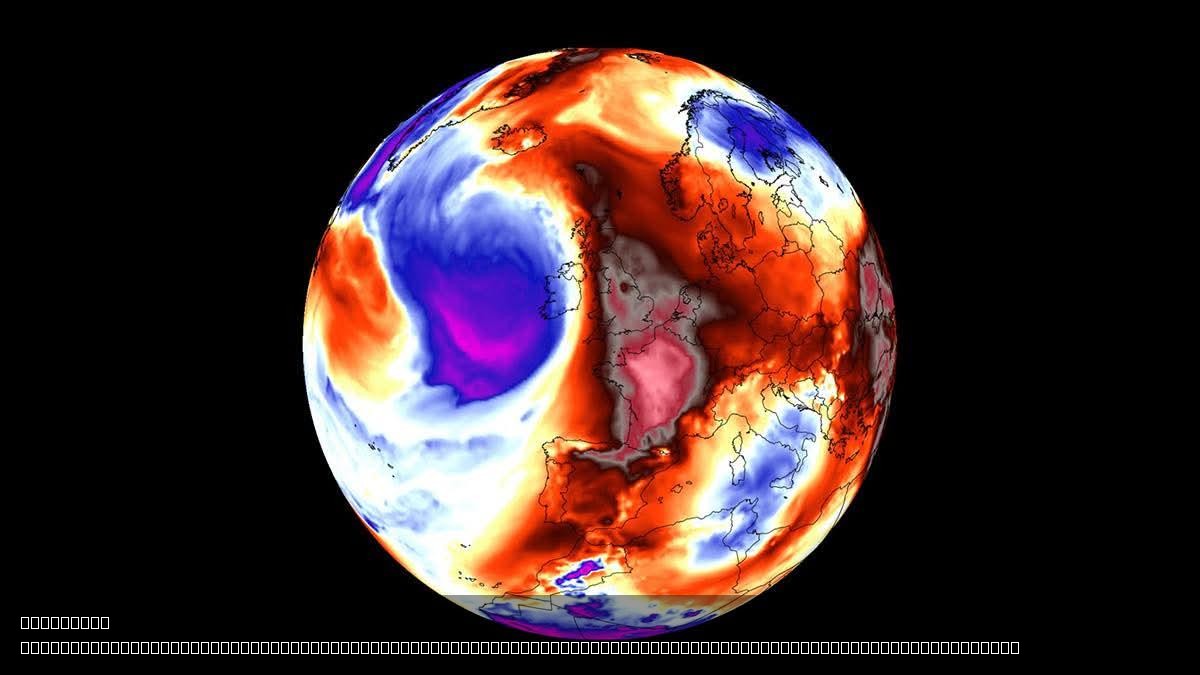Heatwave Map of Europe 2023


Marcus Rodriguez
Historical Geography Expert
Marcus Rodriguez specializes in historical cartography and geographic data analysis. With a background in both history and geography, he brings unique...
Geographic Analysis
What This Map Shows
This visualization presents a detailed map highlighting the regions of Europe currently affected by a significant heatwave, characterized by a heat dome phenomenon. The map specifically illustrates areas in France, Italy, and the Balkans, where temperatures are projected to soar into the 40s °C. A heat dome occurs when a high-pressure system traps warm air in a specific area, leading to increased temperatures and prolonged heat conditions. Understanding the geographical distribution of this heatwave is essential for assessing its impact on the environment, public health, and economic activities.
Deep Dive into Heatwaves in Europe
Heatwaves are becoming increasingly common in Europe, largely attributed to climate change and shifting weather patterns. What’s fascinating is that a heat dome can elevate temperatures significantly, often leading to extremes that are far above the average seasonal highs. For instance, in countries like France and Italy, summer temperatures typically range between 25-35 °C, but with the current heat dome, we are witnessing readings surpassing 40 °C. This is not just a minor fluctuation; it represents a concerning trend that could become the new normal.
Interestingly, the reasons behind these soaring temperatures can be traced back to several interrelated factors. One major contributor is the blocking patterns in the jet stream, which can lead to persistent high-pressure systems over specific regions. As these systems dominate, they can stifle natural cooling processes, such as cloud cover and precipitation, effectively trapping heat close to the ground.
From a climatological perspective, Europe’s geography plays a significant role in how heatwaves affect different areas. Coastal regions may experience slightly milder temperatures due to ocean breezes, while inland areas tend to heat up more quickly and intensely, as seen in the central regions of France and northern Italy. Furthermore, urban areas exacerbate this effect, often referred to as the urban heat island phenomenon, where cities can be several degrees warmer than surrounding rural areas due to human activities and infrastructure.
It's crucial to note that heatwaves pose serious risks to public health, agriculture, and energy consumption. Higher temperatures can lead to heat-related illnesses, especially among vulnerable populations such as the elderly and those with pre-existing health conditions. The agricultural sector is also at risk, as extreme heat can damage crops and reduce yields, impacting food supply chains. Finally, energy demands typically surge during heatwaves due to increased use of air conditioning, which can strain power grids and lead to outages.
Regional Analysis
When we analyze the map further, we can see significant variations in how the heatwave impacts different regions. In southern France, cities like Marseille and Nice are experiencing some of the highest temperatures, which can lead to increased tourism but also poses challenges in terms of water supply and heat management. In contrast, northern France may see slightly lower temperatures but still feels the heatwave's effects, particularly in urban centers like Paris.
Italy is facing a similar scenario, with the regions of Lombardy and Emilia-Romagna bearing the brunt of the heat. The agricultural heartland of Italy is at risk, where extreme temperatures can lead to crop failures. Conversely, the coastal areas, while still hot, may benefit from sea breezes that provide some temporary relief. The Balkans, particularly nations like Serbia and Croatia, are also heavily impacted, where the combination of high temperatures and dry conditions can increase the risk of wildfires and drought.
Significance and Impact
Understanding the implications of this heatwave is critical. As Europe braces for increasingly frequent and severe heatwaves, the need for effective climate adaptation strategies becomes more apparent. Governments and policymakers must prioritize infrastructure improvements, such as enhancing energy efficiency in buildings and developing heat action plans to protect vulnerable populations.
Moreover, this heatwave serves as a stark reminder of the ongoing challenges posed by climate change. Future projections indicate that heatwaves may become more frequent and intense, affecting not only Europe but the entire globe. The rising temperatures could exacerbate existing issues like water scarcity, food security, and public health crises.
As we look to the future, it's essential for communities, governments, and individuals to remain vigilant and proactive in addressing the impacts of these extreme weather events. Awareness and preparedness can help mitigate the consequences of heatwaves, ensuring that we protect both our people and our planet.
Visualization Details
- Published
- August 5, 2025
- Views
- 188
Comments
Loading comments...